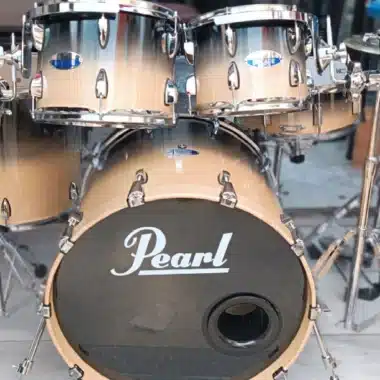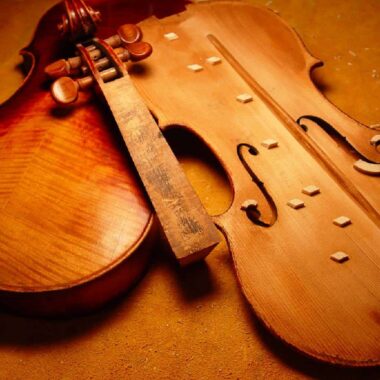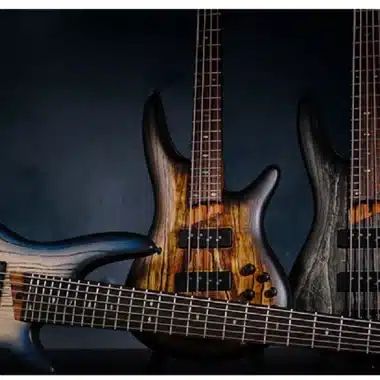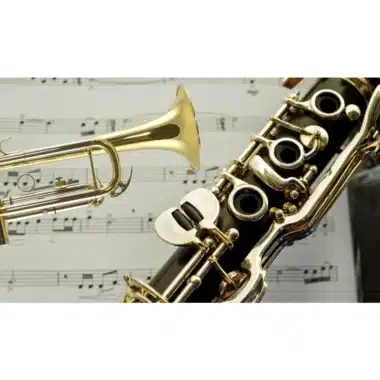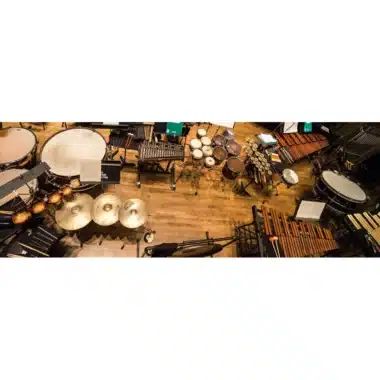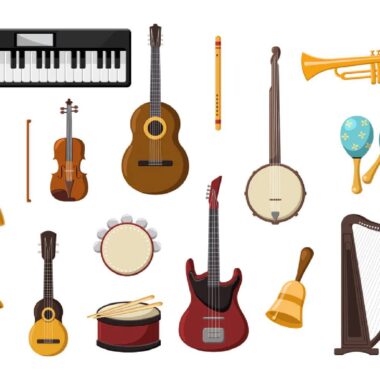Electric Instruments: The Sound of Modern Music
Electric instruments represent a groundbreaking evolution in the world of music, merging artistry with technology to create new sounds and possibilities. Unlike their acoustic counterparts, which rely solely on physical vibrations to produce sound, electric instruments utilize electrical signals to generate and amplify sound waves. This fundamental difference has opened up a vast array of creative avenues for musicians, allowing them to explore a diversity of genres and styles that would have been unimaginable just a century ago.
The origins of electric instruments can be traced back to the late 19th century, when innovators began experimenting with electricity as a means of sound production. The first significant breakthrough came with the development of the electric guitar, which emerged in the 1930s. This invention transformed the landscape of popular music, enabling guitarists to amplify their sound and sustain notes in ways that were not possible with traditional acoustic guitars. Artists like Chuck Berry and Les Paul harnessed the electric guitar’s potential, leading to its central role in the burgeoning genres of rock and roll and jazz.
As the 20th century progressed, electric instruments continued to evolve. The introduction of the electric piano and the Hammond organ revolutionized jazz and gospel music, adding rich, layered sounds to performances. These innovations were pivotal in shaping the sound of modern music, allowing musicians to experiment with harmony and rhythm in novel ways. The invention of synthesizers in the late 1960s and 1970s marked another turning point, enabling artists to create entirely new sounds and textures. Synthesizers opened the door to electronic music, fundamentally changing the music production landscape and influencing genres such as disco, techno, and ambient music.
In contemporary music, electric instruments remain at the forefront of innovation. They are not only used by professional musicians but are also accessible to amateurs and hobbyists, thanks to the proliferation of affordable instruments and digital technology. The rise of Digital Audio Workstations (DAWs) has democratized music production, allowing anyone with a computer to compose, record, and produce music with electric instruments at their fingertips.
Moreover, electric instruments have influenced various cultural movements, serving as symbols of rebellion, identity, and creativity. They have empowered musicians to express their individuality and engage with social issues, reflecting the dynamic nature of society through sound.
In summary, electric instruments have transformed the musical landscape, shaping genres and influencing cultural movements. Their ability to amplify and manipulate sound has allowed for unprecedented creativity and expression, making them indispensable in the world of modern music. As technology continues to advance, the future of electric instruments promises even more exciting developments, ensuring their continued relevance and significance in music.
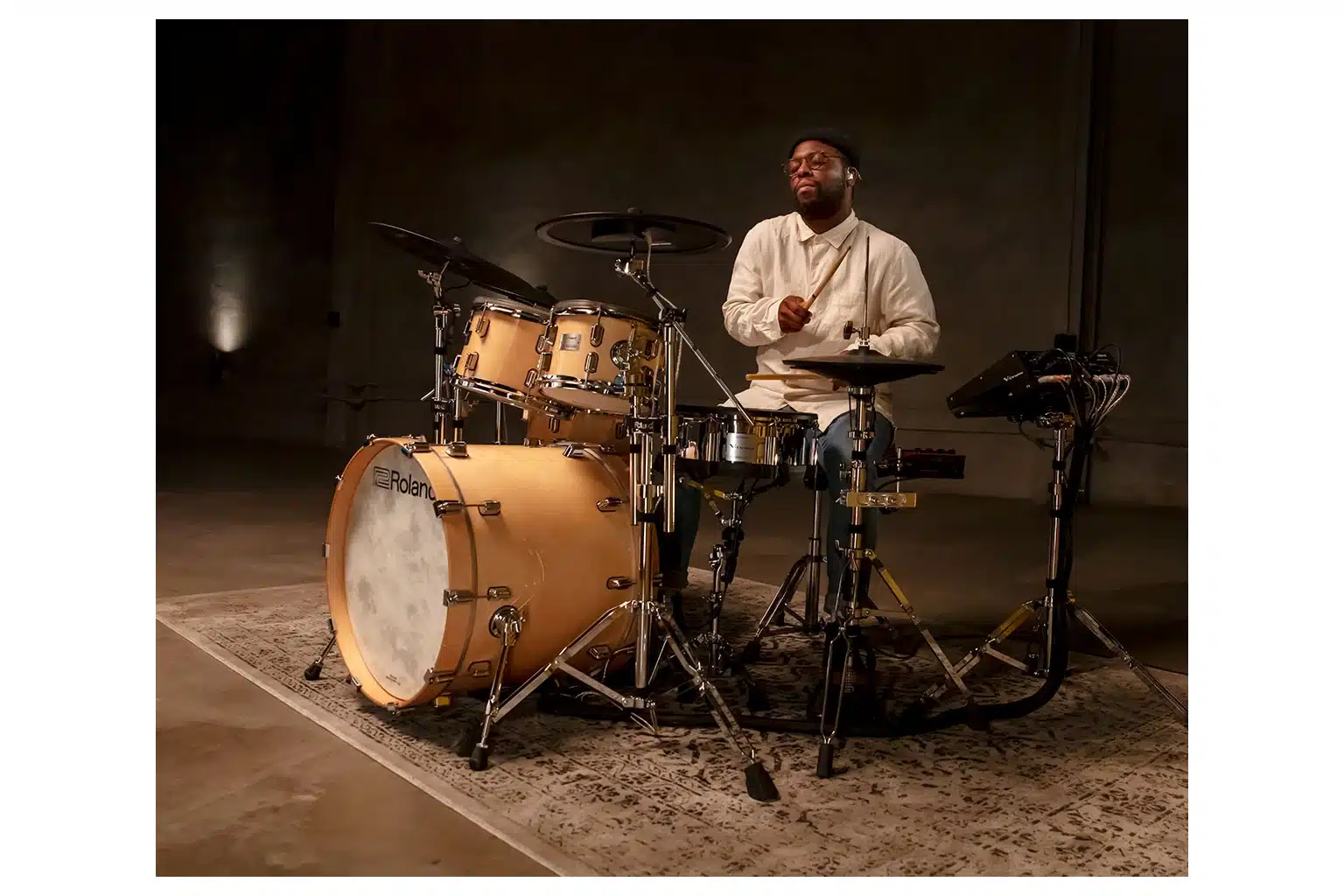
The Evolution of Electric Instruments
The journey of electric instruments has profoundly impacted the music world, transforming how sound is created, perceived, and experienced. Beginning in the late 19th century, this evolution has spanned decades of innovation, reflecting technological advancements and the changing tastes of musicians and audiences alike. From the first electric guitars to sophisticated synthesizers, electric instruments have continuously shaped various musical genres, leading to the diverse soundscapes we enjoy today.
The origin of electric instruments can be traced back to the invention of the Telharmonium by Thaddeus Cahill in the late 1890s. This massive machine utilized electrical currents to produce sound, marking a significant departure from traditional acoustic instruments. Although impractical for widespread use, the Telharmonium laid the groundwork for future developments in electronic sound production. Following this, in the 1920s, the electric guitar emerged, allowing musicians to amplify their sound and explore new sonic possibilities. The first commercially successful electric guitar was created by George Beauchamp and Adolph Rickenbacker in 1931. This innovation enabled guitarists to play louder and sustain notes longer, which was particularly appealing in the burgeoning rock and roll scene.
As electric instruments gained popularity, so did the need for amplification. The development of tube amplifiers in the 1930s and 1940s allowed musicians to project their sound further, giving rise to iconic rock and blues guitarists who became synonymous with this new style of music. Legends such as Chuck Berry and Buddy Holly harnessed the power of electric guitars, establishing a sound that would influence countless artists and genres.
The late 1950s and 1960s saw a pivotal moment in the evolution of electric instruments with the introduction of the electric organ. Instruments like the Hammond B-3 became staples in jazz, gospel, and rock music, providing a rich, layered sound that was previously unattainable. Musicians began to experiment with these new instruments, blending electric and acoustic sounds to create innovative arrangements that captivated audiences.
The most transformative period for electric instruments came with the rise of synthesizers in the 1960s and 1970s. Early synthesizers, such as the Moog and ARP Odyssey, allowed composers to manipulate sound in ways never before imagined. This technology paved the way for new genres, particularly electronic music, which thrived on the limitless possibilities of synthesizers. Artists like Kraftwerk and Jean-Michel Jarre pushed the boundaries of music, creating mesmerizing compositions that redefined the auditory landscape.
As technology advanced, so did the design and capabilities of electric instruments. The introduction of MIDI (Musical Instrument Digital Interface) in the 1980s revolutionized music production, allowing different devices to communicate and collaborate seamlessly. Digital synthesizers became prevalent, offering musicians a vast array of sounds and features that expanded their creative potential. Instruments like the Yamaha DX7 and Roland D-50 became iconic during this era, shaping the sound of pop, rock, and electronic music.
The evolution of electric instruments continued into the 21st century, with the rise of software-based instruments and virtual synthesizers. Musicians can now access a limitless library of sounds and effects from their computers, democratizing music production and allowing for unprecedented creativity. This shift has made it easier for aspiring musicians to create high-quality music without needing expensive gear.
The evolution of electric instruments has been a remarkable journey, characterized by innovation and creativity. From the early electric guitar to the sophisticated synthesizers of today, electric instruments have transformed the music landscape, allowing artists to explore new sonic territories and connect with audiences in fresh and exciting ways. As technology continues to evolve, electric instruments will undoubtedly play a central role in shaping the future of music, inspiring new generations of musicians to push the boundaries of creativity and sound.
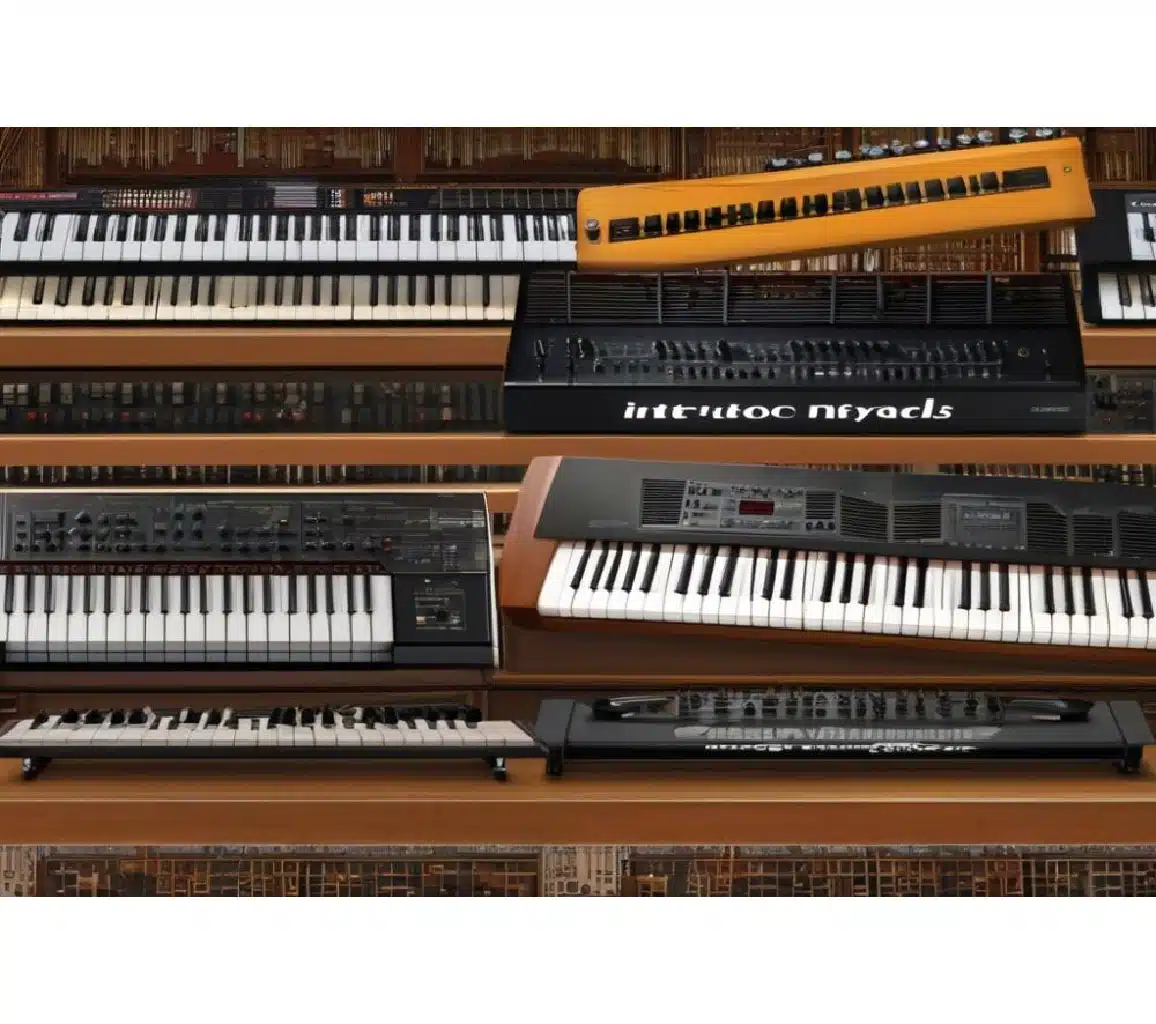
The Impact of Electric Instruments on Music Genres
Electric instruments have fundamentally transformed the landscape of music, shaping and redefining genres since their inception. The ability to amplify sound and manipulate tones has enabled musicians to explore new creative avenues, leading to the emergence of entirely new styles and subgenres. From rock and jazz to pop and electronic music, electric instruments have left an indelible mark, influencing the way artists create and perform.
Rock and Roll
Perhaps the most iconic impact of electric instruments is found in rock and roll. The electric guitar, with its ability to produce powerful sounds and sustain notes, became synonymous with this genre. The invention of the electric guitar in the 1930s paved the way for legends like Chuck Berry, Elvis Presley, and Jimi Hendrix. These artists pushed the boundaries of guitar playing, utilizing distortion, feedback, and various effects pedals to create a unique sound that resonated with youth culture.
The electric bass guitar also played a crucial role in rock music. By providing a solid rhythmic foundation, it complemented the electric guitar and allowed for more complex arrangements. Bands like The Beatles and Led Zeppelin showcased the electric guitar’s versatility, leading to the development of subgenres such as hard rock, punk, and alternative rock, each with its distinctive sound rooted in electric instrumentation.
Jazz and Fusion
In the world of jazz, electric instruments have expanded the genre’s boundaries significantly. The introduction of electric pianos, such as the Fender Rhodes and Wurlitzer, added a new texture to jazz compositions. Pioneering musicians like Herbie Hancock and Chick Corea embraced electric instruments, incorporating them into their work to create innovative blends of jazz, rock, and funk.
Fusion, a genre that merges jazz with elements of rock and funk, owes much of its sound to electric instruments. Artists like Miles Davis and John McLaughlin utilized electric guitars and synthesizers to explore complex harmonic structures and rhythmic patterns. This fusion of styles not only challenged traditional jazz norms but also paved the way for new musical expressions that resonate today.
Pop Music
Electric instruments have been instrumental in shaping the sound of contemporary pop music. The rise of synthesizers in the 1980s marked a significant shift, enabling artists to create catchy melodies and infectious beats. Icons like Madonna, Prince, and Michael Jackson harnessed the power of electric instruments to craft memorable hits that dominated the charts.
As technology advanced, so did the production techniques in pop music. The introduction of digital audio workstations and software synthesizers allowed producers to experiment with a vast array of sounds and effects. This accessibility has given rise to a new generation of pop artists who continue to push the boundaries of sound, blending acoustic elements with electronic production to create fresh, innovative tracks.
Electronic Music
The evolution of electronic music is perhaps the most direct consequence of electric instruments. Genres such as techno, house, and drum and bass emerged from the creative possibilities offered by synthesizers and drum machines. Artists like Kraftwerk and Daft Punk became pioneers, using electric instruments to craft intricate compositions that challenged traditional musical structures.
The impact of electric instruments on electronic music is profound. The ability to manipulate sound through sequencing, sampling, and real-time performance has transformed how music is created and experienced. Electronic music festivals have grown in popularity, showcasing the diverse range of sounds produced by electric instruments and connecting fans worldwide.
Hip-Hop and R&B
Electric instruments have played a significant role in shaping hip-hop and R&B. Producers like Dr. Dre and Timbaland have utilized drum machines, samplers, and synthesizers to create groundbreaking beats. The incorporation of electric instruments has allowed for innovative soundscapes, giving rise to unique styles within the genre.
Artists like Prince and OutKast have also blended electric instruments with traditional R&B elements, creating a fusion that resonates with listeners. The versatility of electric instruments has opened doors for experimentation and collaboration across genres.
Consequently,the impact of electric instruments on music genres cannot be overstated. They have not only redefined existing styles but also birthed new genres, enabling artists to explore innovative sounds and expressions. From the electrifying riffs of rock and roll to the complex harmonies of jazz and the pulsating beats of electronic music, electric instruments have played a pivotal role in shaping the musical landscape. As technology continues to evolve, so too will the role of electric instruments, ensuring their enduring influence on the future of music.
The Cultural Significance of Electric Instruments
Electric instruments have had a profound cultural impact since their inception, transcending mere sound production to become symbols of innovation, creativity, and social change. From their role in shaping musical genres to influencing youth culture and social movements, electric instruments have not only transformed how music is made but also how it is experienced and understood in various cultural contexts.
1. Cultural Identity and Expression
Electric instruments have become essential tools for cultural expression. They allow musicians to break free from traditional sounds and create new genres that reflect contemporary experiences. For instance, the electric guitar, a cornerstone of rock music, became a powerful symbol of rebellion and individuality during the 1950s and 1960s. Artists like Chuck Berry and Jimi Hendrix used the electric guitar not just as a musical instrument but as a means of expressing their cultural identity and challenging societal norms.
In genres like reggae, the electric bass and guitar have been pivotal in shaping the sound and ethos of the music, reflecting the struggles and triumphs of the Jamaican people. Similarly, in hip-hop, sampling electric instruments has enabled artists to weave stories that resonate with their communities, fostering a sense of belonging and shared experience.
2. Catalysts for Social Change
Throughout history, electric instruments have served as catalysts for social change. In the 1960s, the electric guitar became an emblem of the counterculture movement, with musicians like Bob Dylan and Joan Baez using their music to address social issues such as civil rights and anti-war sentiments. Electric instruments amplified voices that were often marginalized, bringing attention to pressing social injustices.
The punk rock movement of the late 1970s further exemplified the role of electric instruments in social change. Bands like The Clash and the Sex Pistols used distorted guitars and raw energy to critique societal norms and express dissatisfaction with the status quo. The sound of electric instruments became synonymous with resistance and empowerment, inspiring a generation to challenge authority and seek change.
3. Cross-Cultural Influences
Electric instruments have facilitated cross-cultural exchanges, blending musical styles and traditions. The fusion of electric instruments with traditional sounds has led to the emergence of new genres that celebrate cultural diversity. For example, in the 1980s, the combination of electric guitars with African rhythms in genres like Afrobeat showcased how electric instruments could bridge cultural divides.
The globalization of music has also allowed artists to incorporate electric instruments into their native musical traditions. Musicians from various backgrounds have embraced electric instruments to create unique sounds that reflect their heritage while engaging with contemporary trends. This blending of styles not only enriches the music but also fosters understanding and appreciation of different cultures.
4. Youth Culture and Community Building
Electric instruments have played a crucial role in shaping youth culture and fostering community. The rise of rock and pop music in the mid-20th century gave young people a sense of identity and belonging. Electric instruments became symbols of youthful rebellion, creativity, and freedom. The electric guitar, in particular, became a rite of passage for many young musicians, representing a pathway to self-expression and artistic exploration.
Music festivals and live performances centered around electric instruments have further strengthened community bonds. Events like Woodstock and Glastonbury have brought together people from diverse backgrounds, united by a shared love for music and electric instrumentation. These gatherings celebrate not only the music itself but also the values of peace, love, and togetherness.
5. Technological Advancements and Cultural Shifts
The technological advancements associated with electric instruments have also contributed to cultural shifts. The rise of electronic music and the widespread availability of digital instruments and software have democratized music production, allowing anyone with a computer to create music. This shift has led to the emergence of new artists and genres, reshaping the musical landscape.
The accessibility of electric instruments has empowered underrepresented voices in the music industry, fostering a more diverse array of sounds and perspectives. Social media platforms have provided a space for artists to share their work, connect with fans, and build communities around their music. This digital age of music has allowed electric instruments to continue their cultural significance, adapting to the needs and desires of contemporary audiences.
The cultural significance of electric instruments is multifaceted, reflecting their ability to inspire, unite, and challenge. From their role in shaping musical genres and cultural identity to their impact on social movements and community building, electric instruments have woven themselves into the fabric of society.
As technology continues to evolve and music trends shift, the cultural significance of electric instruments will undoubtedly persist, shaping the sound and meaning of music for generations to come. Their legacy is not only found in the music itself but in the cultural narratives they help to create and sustain.
Electric instruments have played an integral role in shaping the musical landscape, transcending the boundaries of sound and culture to redefine how we create, experience, and understand music. Their evolution over the past century has not only transformed genres but has also influenced social movements, artistic expression, and cultural identity on a global scale. As we reflect on the significance of electric instruments, it becomes evident that their impact reaches far beyond mere sound production; they embody the spirit of innovation and creativity that continues to inspire musicians and listeners alike.
At the heart of this transformation is the ability of electric instruments to amplify sound and facilitate experimentation. From the early electric guitars that revolutionized rock and roll to the sophisticated synthesizers that birthed electronic music, these instruments have enabled artists to explore new sonic territories and push the limits of musical expression. The richness and diversity of sounds produced by electric instruments have led to the emergence of countless genres, each with its unique characteristics and cultural significance.
Furthermore, electric instruments have become symbols of identity and empowerment within various cultural movements. They have given voice to marginalized communities and allowed musicians to address social issues, driving change and fostering dialogue. The electric guitar, for example, became an emblem of rebellion during the counterculture movements of the 1960s and 70s, while hip-hop artists have harnessed the power of sampling and electronic beats to share stories that resonate with their communities. In this way, electric instruments have not only influenced musical styles but have also shaped cultural narratives, reflecting the complexities of human experience.
The technological advancements associated with electric instruments have also played a crucial role in their cultural significance. With the rise of digital technology, musicians now have unprecedented access to tools that empower them to create music more easily and effectively. Digital Audio Workstations (DAWs) have revolutionized music production, allowing artists to record, edit, and manipulate sound in ways that were once the domain of professional studios. This accessibility has democratized music creation, enabling a diverse array of voices to emerge and flourish in the industry. As a result, we have seen an explosion of creativity and innovation in contemporary music, with artists experimenting with hybrid genres and pushing artistic boundaries.
Moreover, the cultural significance of electric instruments is evidenced by their enduring presence in popular music and their ability to adapt to changing trends. Genres such as rock, pop, electronic, and hip-hop continue to thrive, fueled by the creativity and experimentation that electric instruments facilitate. Even as music evolves, the fundamental qualities of electric instruments—amplification, sound manipulation, and versatility—remain at the forefront of musical innovation.
As we look to the future, the potential of electric instruments appears boundless. Emerging technologies such as artificial intelligence, machine learning, and virtual reality are poised to further enhance the capabilities of musicians and redefine the music experience. Smart instruments that adapt to a musician’s style or integrate seamlessly with software tools may reshape how we approach music creation and performance. This exciting frontier presents new opportunities for artists to collaborate, innovate, and connect with audiences in unprecedented ways.
In conclusion, the journey of electric instruments has been one of profound transformation and cultural significance. They have shaped the sounds we love, influenced the music we create, and reflected the societies we live in. Electric instruments are more than just tools; they are vital components of a vibrant musical ecosystem that fosters creativity, dialogue, and connection.
As we celebrate the legacy of electric instruments, we can look forward to a future rich with innovation and artistic expression, where the power of sound continues to inspire and unite us all. Whether in the hands of a seasoned professional or an aspiring musician, electric instruments will undoubtedly remain a cornerstone of musical culture for generations to come.



